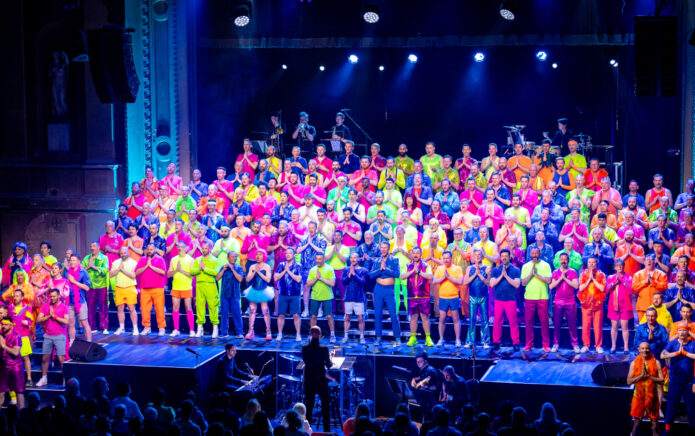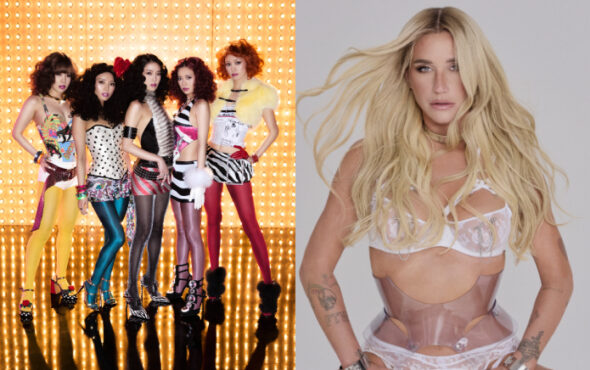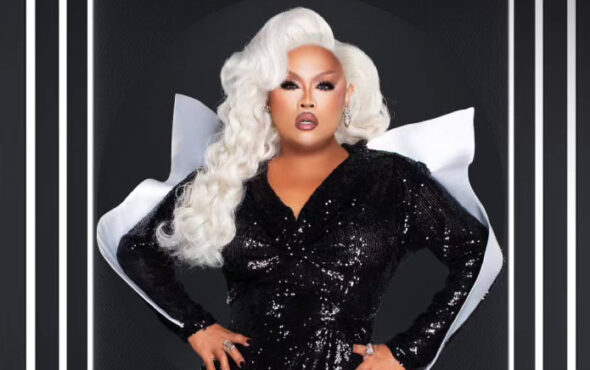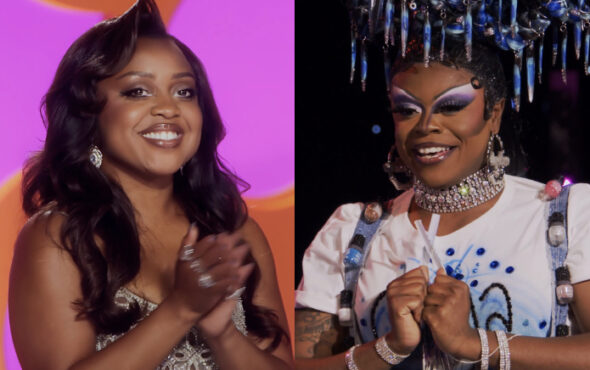
Taylor Swift kick-started her career as a freshman writing tracks about high school heartbreak. It wasn’t until 2006 that the hopeful singer would release her first full-length record. Making a name for herself as a young teen, Swift’s career has since spanned genre shakeups drifting from country, indie-folk to tried and tested chart pop. With over a decade of acclaim to her name, the icon has become a notable figurehead for her immensely dedicated fanbase and record breaking discography.
With nine standout albums to look back on, we reflect on Swift’s complete catalogue and rank her records from worst to best.
9. Taylor Swift (self-titled)
Right, there are bound to be Swifties that disagree with the self-titled placement, but hear me out. Sure, this was Swift’s first release (and a promising one at that), but its early age inevitably pales to what the singer has since pulled off.
Debuting in 2006, this was the Nashville singer at her commendable beginning. The new scene country singer made waves with her hit Tim McGraw which caught mainstream attention. It’s an album laden with plucked strings, drawn-out accent vowels, and the occasional sad girl country favourite – Tear Drops On My Guitar – and the slightly more plucky Our Song. If anything, Swift’s debut showcases her sharpened penmanship and diaristic talent – a talent that would make her name a handful of years later.
8. Lover
Lover is an unashamedly eccentric album. Packed with bright colours, vivid lyrics, and an upbeat landscape, Swift trades her melancholy greys for glorious pastels and emotionally rich tracks. Take Cruel Summer – a buzzing candyfloss pop hit that was worthy of being a lead single. Elsewhere, the album opener, I Forgot You Existed, is a sickly sweet track that casts a glance at its former black-and-white era. But it’s not all self-referential moments.
Lover sees Swift joyfully stride into atmospheric tracks Cornelia Street and Death By A Thousand Cuts. The modern equivalent of Red’s Stay Stay Stay, Lover’s Paper Rings is a jaunty confession of love, but the hearty album isn’t just a fun pop diaristic daydream. Afterglow and Daydream are markers of Swift’s love lessons and emotional honesty.
Settled between the gimmicky ME! and You Need To Calm Down (the singer’s ode to the LGBTQ+ community), the maturity of both are dampened by the questionably chosen singles. In the end, Lover is an anecdote of strength and self-reliance and, in that, it charters her growth as an artist.
7. Reputation
So, before the hate tweets get drafted, let’s make it clear that Reputation often deserves better – even if it didn’t get a Grammy nod. Swift’s revenge era record lived its truth as a compilation that set the record straight and gave us some full-throttle pop hits along the way. That said, some tracks felt incongruous from her maximalist speaker moments.
The likes of End Game and This Is Why We Can’t Have Nice Things were clunky add-ons to a mostly sensible tracklist. However, after disappearing from public view for a year, Swift ditched country-pop love story moments for adrenaline-fuelled tales of romance and then some. Reputation saw the artist distance herself from clean synth-laden pop for a sound that tangles with R&B and alternative influences.
Tracks like Look What You Made Me Do set the tone for Swift’s tougher exterior, with few outliers (Delicate and New Year’s Day) breaking the trend. Elsewhere, immediate favourites Getaway Car, Dress, and the playful Gorgeous were reminders of Swift’s shapeshifting songwriting. Rich with lasting bridges, stories of score-settling, and impassioned romance, Reputation stands as one of Swift’s most distinct eras and for good reason.
6. Fearless (Taylor’s Version)
The first effort of Swift’s re-recording venture, Fearless (Taylor’s Version) was unique for a multitude of reasons but, most notably, listeners saw the 31-year-old artist revisit her teenage years. Contextually, the album was the singer’s move to regain control of her Masters, but her revisioned effort showcases much more than that. At its finest, Fearless is the record that gave way to her success.
Modern re-recorded hits (Love Story, Fifteen, You Belong With Me) tenderly captured her coming-of-age heartbreak. However, the differences are notable: the accent twangs, Swift’s slightly deeper tone, and the odd production changes, yet it manages to capture the magic of its original self. Alongside the numerous vault tracks – Mr. Perfectly Fine receiving the most attention – Fearless (Taylor’s Version) is a testament to artistic principle and her message is heard loud and clear.
5. Evermore
A follow-up to Swift’s acclaimed Folklore, the singer once again partnered with The National’s Aaron Dessner, pop companion Antonoff, and, surprisingly, her partner Joe Alwyn. A joyous extension of what came first, Evermore effortlessly compliments its predecessor while opting to lean further into its plain of woodland country instrumentals.
Much like Folklore, Evermore’s candescent opening spotlights Swift’s first-person storytelling and pulls you into her detailed Swiftian cinematic universe. At its helm, Evermore offers more of a country pang with The Haim-assisted No Body, No Crime is exactly that, while the likes of Ivy, Happiness, and Marjorie are softer, more folksy offerings. Evermore promises a comeback trend and it delivers.
4. 1989
A pure pop record, 1989 saw Swift claim her territory as a history maker with her most commercially successful album up until then. The singer’s 2014 era – marked with thick rim sunglasses and a signature short blonde bob – signalled her move to reinvent her (musical) image, almost a soft launch of Reputation if you will.
Chart makers Blank Space and Out Of The Woods sceptically documented character-driven high-profile dating escapades and sexist headlines, while the similar vein of Clean, You Are In Love, and Wildest Dream revisited the Nashville artist’s familiar romantic escapist sounds.
1989 is an album that goes full circle and addresses her past self. Whether it’s besting an agitated critic from Speak Now’s Mean or starting afresh as echoed in Red’s Begin Again, Swift’s mainstream move to pop (and New York) is a win that lands bigger than commercial success. In short, 1989 is a resilient “new soundtrack” popscape that shaped the 2014 era. It’s an album for the ages.
3. Speak Now
Penned by 19-year-old Swift, Speak Now is vastly overlooked for its emotional nuance and self-documentation. A record that captures the singer’s move from her wide-eyed country-tinged Fearless era to a burgeoning celebrity. The album sees the singer grapple with bolder themes of heartbreak, adulthood, and a more defiant crossover between her underdog country identity and emerging pop persona.
Despite this subtle tension, the singer leans into her now famed grandiose melodrama in Sparks Fly and, while, later, exploring her refined biographic qualities in pop hit The Story of Us, the fairytale power ballad Enchanted, and the romanticist high stakes dark symphony Haunted.
Of course, there are moments that have not aged all too well. Swift’s Better Than Revenge – although akin to pop-punk turned Bad Blood moment – shares questionably misogynistic lyrics, similarly the self-titled track Speak Now points sharp lyrics at the expense of a fictitious bride-to-be. As the album looks ahead, past interrupted awards speeches and heartbreak, Swift turns to legacy in Long Live purposefully tying up Speak Now as a visionary stepping stone proving her graduated pop ambition.
2. Red (Taylor’s Version)
A re-recording of her 2012 classic, Swift imbues her latest version with diligent details as she reaches to reclaim her artistic rights. The Taylor Swift cinematic catalogue is being overhauled one by one. In her second effort, the American singer decorates an already standout tracklist with quaint pop retouches and measured, polished vault tracks – forking out a glossy finish to what would already be a gleaming autumnal reinvention. An opportune retrospective, Swift doubles down on her signature essayist qualities in the immaculate extended vision of All Too Well (10 minute version) to the Phoebe Bridgers’ laden Nothing News.
Elsewhere, the singer sweeps aside the downcast climactic versions for brighter reimaginings as she reunites with hits I Knew You Were Trouble, Holy Ground and 22. Swift’s double dose of pop is found threaded through atmospheric vault tracks such as Max Martin’s Message In A Bottle and her own The Very First Night; a duo of nostalgic upbeat dance numbers. Red (Taylor’s Version) pays homage to the past while signalling her re-records are anything short of a gimmick – they’re a statement of artistic control.
1. Folklore
Swift has a penchant for eccentric reveals and detailed album rollouts, but the sudden release of folklore caught plenty of us by surprise. Teaming up with The National’s Aaron Dessner, the singer delivers a cosy indie-folk sweater weather record made to sate the blues of lockdown. Swift broached her chosen woodland folksy territory with effortless ease, washing the record with a swooning movie-track soundscape and fine-tuned Nashville candour.
Folklore undoubtedly reaffirmed the artist’s indigenous talent as an industry-leading songstress. Whether it was the biographic charm of The Last Great American Dynasty, the sweeping intrigue of a fictitious love triangle or a charismatic ballad on loneliness with Mirrorball, it was an album packed with moving narratives. Appointed as our chosen choice for Swift’s greatest album, Folklore is the singer at her absolute best.



